You probably see a lot of articles discussing the top-performing stocks over the last one, five, or 10 years. But what you don’t see as often is how those former great performers are doing now.
Let’s take a look back at the top stock performers from 2017 and how they are doing now.
| Stock | 2017 Market Cap (billions) | 2017 Return | Return since start of 2018, including dividends (as of April 24, 2023) | Current Market Cap (billions) |
| Madrigal Pharmacueticals (MDGL) | $1.37 | 516% | 230% | $5.5 |
| Sangamo Therapeutics (SGMO) | $1.51 | 438% | -90% | $0.28 |
| Pieris Pharmaceuticals (PIRS) | $0.33 | 437% | -89% | $0.06 |
| Straight Path Communications (formerly STRP) | $2.33 | 436% | Purchased by Verizon in 2018 | NA |
| Esperion Therapeutics (ESPR) | $1.75 | 426% | -98% | $0.11 |
| Ignyta (formerly RXDX) | $1.82 | 404% | Aquired by Roche in 2018 | NA |
| Nektar Therapeutics (NKTR) | $9.19 | 387% | -99% | $0.15 |
| Dynavax Technologies (DVAX) | $1.09 | 373% | -42% | $1.4* |
| Immunomedics (formerly IMMU) | $2.53 | 340% | Acquired by Gilead Sciences in 2020 | NA |
| Spectrum Pharmaceuticals (SPPI) | $1.81 | 328% | -96% | $0.14 |
*DVAX has increased its market cap over the last five years, even though the share price fell. This can happen when the company increases the shares outstanding over the period.
Returns since the start of 2018 are based on TradingView charts.
Below, I discuss the top S&P 500 performers, and whether it makes a difference if you only buy S&P 500 stocks during/following great price performance periods.
The Take Aways
Most of the strongest stocks in 2017 were biotech stocks. That’s because it was a great year for biotech. The SPDR S&P 500 Trust (SPY) was up 22% and the SPDR S&P Biotech ETF (XBI) was up 47%.
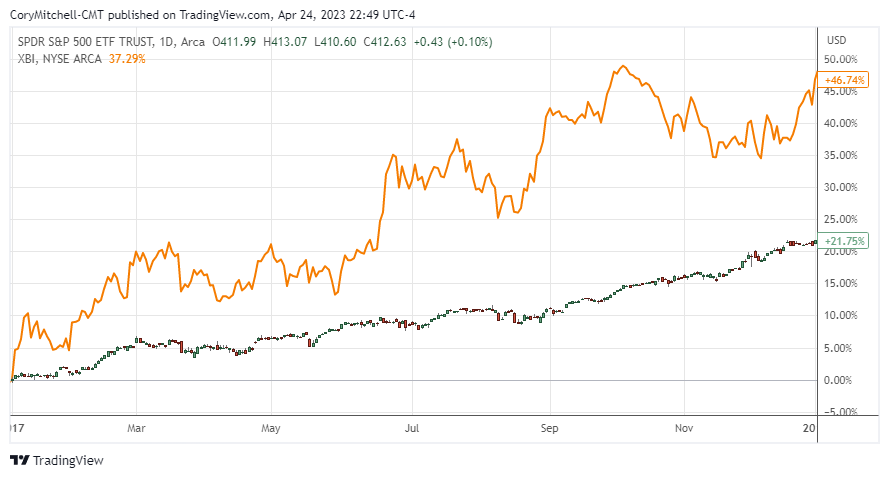
Just because a stock performs well one year, doesn’t mean it will continue to perform well in the future. Three of the top performers were acquired, and only one stock out of the remaining 7 managed to post a gain since 2018. For reference, the SPDR S&P 500 Trust (SPY) is up 68% since the start of 2018.
Six of the former top performers have seen dramatic declines, of at least 42%, and up to 99% declines.
Picking individual stocks is difficult. Even the collective market doesn’t get it right. These stocks were bought up in 2017, but most have been sold off since.
Great buy-and-hold stocks don’t have just one or two banner years. Although you can certainly make short-term profits from such events. Rather, great buy-and-hold stocks have a minimum of a multi-year track record of growing earnings and revenues, a solid track record of profitability, and growth is expected to continue. Even then, a stock is only worth owning if it continues to perform well.
What about if you only picked the top stocks from the S&P 500?
Would that make a difference? Yes, it would, because the S&P 500 has strict profitability requirements for making it into the index in the first place. So S&P 500 stocks tend to be more stable (and when they aren’t, they are dropped from the index).
| S&P 500 Stock (at the time) | 2017 Return | Return since start of 2018, including dividends (as of April 24, 2023) |
| Align Technology (ALGN) | 132% | 63% |
| NRG Energy (NRG) | 121% | 38% |
| First Solar (FSLR) | 114% | 209% |
| Vertex Pharmaceuticals (VRTX) | 104% | 122% |
| Micron (MU) | 101% | 35% |
| Wynn Resorts (WYNN) | 94% | -26% |
| Boeing (BA) | 89% | -27% |
| PayPal Holdings (PYPL) | 87% | 0% |
| D.R. Horton (DHI) | 86% | 125% |
| Nvidia (NVDA) | 83% | 458% |
This data shows that the S&P 500 stocks had a better track record of continued strong performance, even after a fantastic year. 7 out of 10 stocks have produced an overall profit in the time since being top performers in 2017.
Keep in mind the SPDR S&P 500 Trust (SPY) is up 68% over that time, so only 4 out of 10 stocks were able to beat the average….although those four beat it by a significant margin.
When swing trading (trades lasting days to a few months) I am perfectly happy to trade in the strongest stocks. Because I am only there for a short time, and when it starts dropping I am done with it and onto something else.
How about a method that has captured 10% returns/year over the last 100 years and doesn’t require the risk of buying individual stocks?
The Passive Stock Investing Using ETFs eBook lays out the ETFs to buy to create a long-term compounding machine portfolio, with almost no effort. The eBook shows you how it works.
By Cory Mitchell, CMT
Disclaimer: Nothing in this article is personal investment advice, or advice to buy or sell anything. Trading is risky and can result in substantial losses, even more than deposited if using leverage.


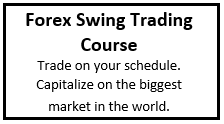
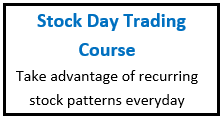
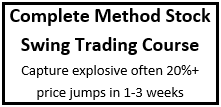
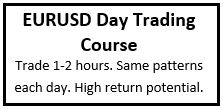
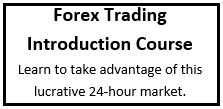
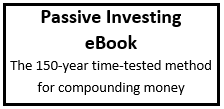
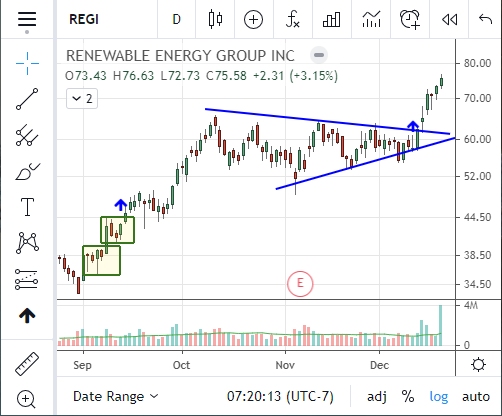
Leave a Reply
Leave a well-reasoned comment or question.